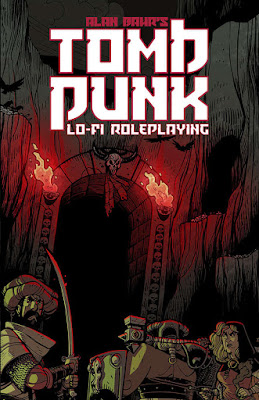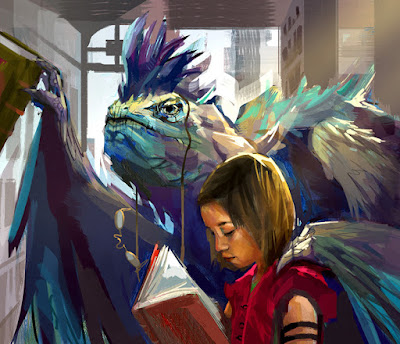Game Review: Lamentations of the Flame Princess Rules & Magic
Note: As always this is a review of a mature product for mature audiences. Children of any age should skip it.
Lamentations of the Flame Princess: Rules and Magic is the core rulebook to Lamentations of the Flame Princess, and I shall use the terms pretty much interchangeably or LotFP.
LotFP was the first retroclone I read when I decided to get to know the OSR about a year and a half ago. I was taken with how it cleaned up B/X Dungeons & Dragons, and put its own twist on it. I've held off on reviewing it all this time because I did not have a physical copy, and when talking abut LotFP that is important for reasons we will discuss below. Now I finally do, and can give the whole picture.
Lamentations of the Flame Princess starts with B/X Dungeons & Dragons and makes a lot of simple quality of life changes to it. It uses ascending AC and a Base Attack Bonus. It replaces the Thief with a Specialist class that measures skills on a number of pips on a D6, with a PC needing to roll equal or under, with some additional skills beyond the standard Thief skills; PCs get points to distribute.
It gives PCs a chance at knowing a language they encounter. PCs are capable of talking or crawling at 0hp, are unconscious and bleeding at - 1hp, and dead at - 4. Inventory is handled with slots. NPC Reaction rolls and encounter procedures are a bit streamlined. Clerics get spells at 1st level, but Turn Undead is now a spell. It includes D&D3e-style ability damage mechanics.
Beyond these simple tweaks, LotFP adds in some changes that make characters feel more specialized and competent. It also includes rules for Naval Combat, seafaring, buying property, investment, and firearms that are decidedly unique to LotFP.
Rather than assume a 14th century level of technology, LotFP assumes something close to the early 17th century. Many of its supplements draw on the Hundred Year's War for a backdrop.
What really sets Lamentations of The Flame Princess apart, however, is a design aesthetic that is found through all of The LofTP line; it is dark, gory, and full of body horror and the most grotesque fairy-tale style of villainy imaginable. From baby-eating witches in Frostbitten and Mutilated, to feeding Protestants and Spaniards to acidic ooze monsters in The God that Crawls, to making statuary out of dead children and encountering a god that is eternally being eaten alive by giant insects in Better than Any Man. Lamentation of the Flame Princess takes D&D into its darkest, most apocalyptic places.




















